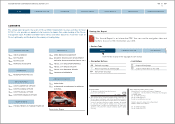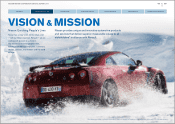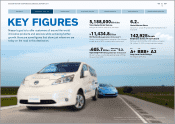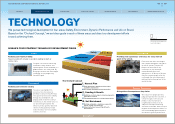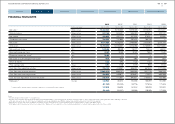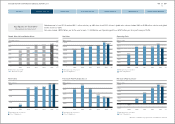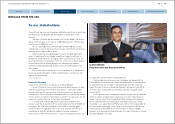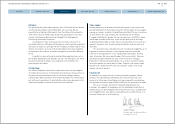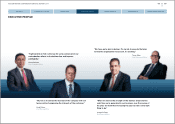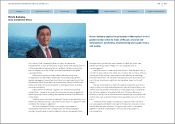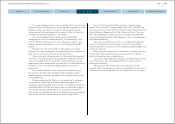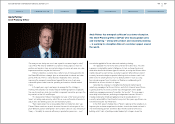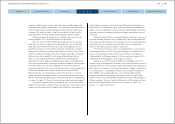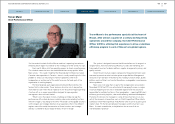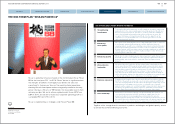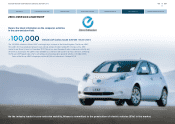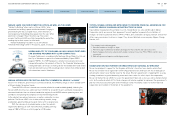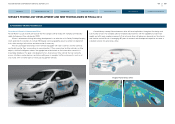Nissan 2014 Annual Report Download - page 12
Download and view the complete annual report
Please find page 12 of the 2014 Nissan annual report below. You can navigate through the pages in the report by either clicking on the pages listed below, or by using the keyword search tool below to find specific information within the annual report.
It is a major challenge given the costs associated with the constant need
to enrich and refresh Nissan products, to meet regulatory requirements, and to
provide customer value. “We are working intensively on product quality,
improving overall [customer] opinions of our models, further cost reductions
and tighter net revenue management,” says Saikawa.
The Chief Competitive Officer is determined to maintain tight
management of such costs, knowing that every 1% improvement in TdC is
worth 70 billion yen to Nissan. That is why he regards cost-control – and
thereby improved competitiveness – as central to the Nissan Power 88
program.
“During the first half of Power 88, we made progressive strategic
investments in product development, technology and business expansion,” he
adds. “We now must harvest the fruits of these investments.”
Those investments included new plants in Mexico and Brazil, expanded
operations in Russia and India, as well as production in Vietnam. Investment
costs, which peaked in the first half of the six-year mid-term plan, are now
expected to be flat or falling over the next three years. This will enable Nissan
to improve its return on investments, feeding through to new growth
opportunities.
The disciplined approach to costs and investment extends beyond
Nissan to the wider Renault-Nissan Alliance. Saikawa expects greater
Alliance integration to provide huge opportunities to improve efficiency and
cost competitiveness.
To reduce duplication, the Alliance has announced that is converging
four key business areas: R&D, manufacturing including supply-chain
management, purchasing and human resources. “Converging those functions,
putting both Renault and Nissan resources under a single leader will give us
much greater efficiency and effectiveness in research and development;
higher efficiency and flexibility in industrial strategy and sourcing; and benefits
from common module or vehicle architecture at much higher volume.”
Nissan’s Chief Competitive Officer says Nissan is already reaping
rewards from the Alliance’s common module family (CMF), reflected in the
launch and customer acclaim for the new Rogue in North America, the award-
winning Qashqai in Europe and the X-Trail in Japan and China. “They have
been well accepted by customers, and from our viewpoint, they have been
showing the significant benefit of CMF approach in terms of competitiveness
and investment efficiency.
“Now under a new alliance structure, we are extending this approach
from the C-D segment to A and B segments as well. This will definitely
provide huge benefit of scale and a further sharpened competitive edge to our
coming new products.”
Deeper integration between Nissan and Renault – while preserving the
distinct market tactics, product designs and cultures of the two brands – is
part of a far-reaching drive on competitiveness.
In pursuing that goal, Saikawa is imposing a strict ‘PDCA cycle’ on every
cost in the business. This is the discipline of ‘Plan, Do, Check, Action’ in
seeking cost reductions.
“Tight control on TdC is the key for us to connect all of our cost-
reduction efforts to the bottom-line and improve profitability,” he concludes. “It
will be one of the determining factors for our competitiveness in the market.”
11
NISSAN MOTOR CORPORATION ANNUAL REPORT 2014
EXECUTIVE PROFILE
CONTENTS
CORPORATE FACE TIME
PERFORMANCE
NISSAN POWER 88
CORPORATE GOVERNANCE
CEO MESSAGE


